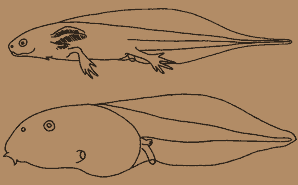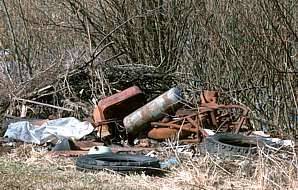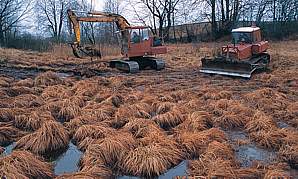|
AMPHIBIANS
|
||||||||||||
Text:
|
Amphibians - role and protection
Profile of amphibians
Amphibians are amphibious animals, which are present in the warm and temperate climate zone. They exhibit many features, which indicate adaptation to living in both given environments. Larvae of amphibians live in water environment while adult forms live mainly on land, but still remain lined to water environment to a smaller or larger extent. Amphibians, which are present in Poland, belong to two orders: caudate amphibians (salamanders and newts) and ecaudate amphibians (toads, fire-bellied toads, spadefoots, frogs and tree-frogs).
Amphibians can be characterised with the following features:
Meaning of amphibians
Amphibians, feeding mainly on insects, are one of the major factors retaining a biological balance in the environment. Most amphibians exhibits nocturnal activity and hunts insects, which are beyond the range of most birds, which are active during the day. They are also the source of animal protein of high quality and due to that fact may be eaten by people in various and numerous countries. It happens much more seldom that the presence of amphibians might induce a negative influence on human economy for example in fishponds, where they eat a significant share of fish fry.
Amphibians and people
Currently, there is a noted decrease in the number of amphibians in the world, it is especially visible in the highly - developed countries of Europe. Amphibians are animals, which exhibit high sensibility to changes in the natural environment. Places of their natural reproduction are especially threatened - these are small water reservoirs, which disappear or are transformed as a result of various and numerous factors (climate warming up, lowering of the level of ground-waters, pollution of natural environment etc.). All national species of amphibians are subject to strict protection in Poland under the Decree of the Minister of Environment from the 26th of September 2001.
Protection of amphibians in the Wigry National Park
Many water reservoirs, which are the reproduction places for amphibians, unfortunately dry up at the same time preventing the reproduction success for the whole populations. Such phenomena indicate the need to undertake effective protection measures by the service of the Park, which aim at - among the others - retaining natural habitats of amphibians and reducing the mortality rate among these animals. Thanks to financial support from national and foreign foundations (The National Foundation for Protection of Natural Environment and Water Management, EcoFund, the Embassy of the Kingdom of Netherlands, the Dutch Agency for Protection of Natural Environment, GEF, the British KNOW-HOW Foundation) it was possible to perform actions aiming at recreation of the most precious water reservoirs - as regards fauna of amphibians - in the area of the Park and its surrounding. An example of such action on a very large scale can be seen in the vicinity of the village of Rosochaty Róg, where seven water-ponds where recreated. These water-ponds are the reproduction places for many species of amphibians, including: smooth newt, fire-bellied toad, common spadefoot and other three species of frogs. In order to facilitate learning about the biology and ecology of these amphibians, an education path named "Amphibians" was created along these recreated water-ponds. This path is supplied with a guidebook, information tables, a footbridge and a platform. In Sobolewo, further four ponds were recreated just for tree frogs. Both actions of re-naturalization of these ponds turned out to be a large success, which at the same time contributed to enforcing local populations of these given amphibians.
There are 12 species of amphibians in the area of the Wigry National Park, and they belong to 2 orders and 6 families:
|
|||||||||||
|
|
|



